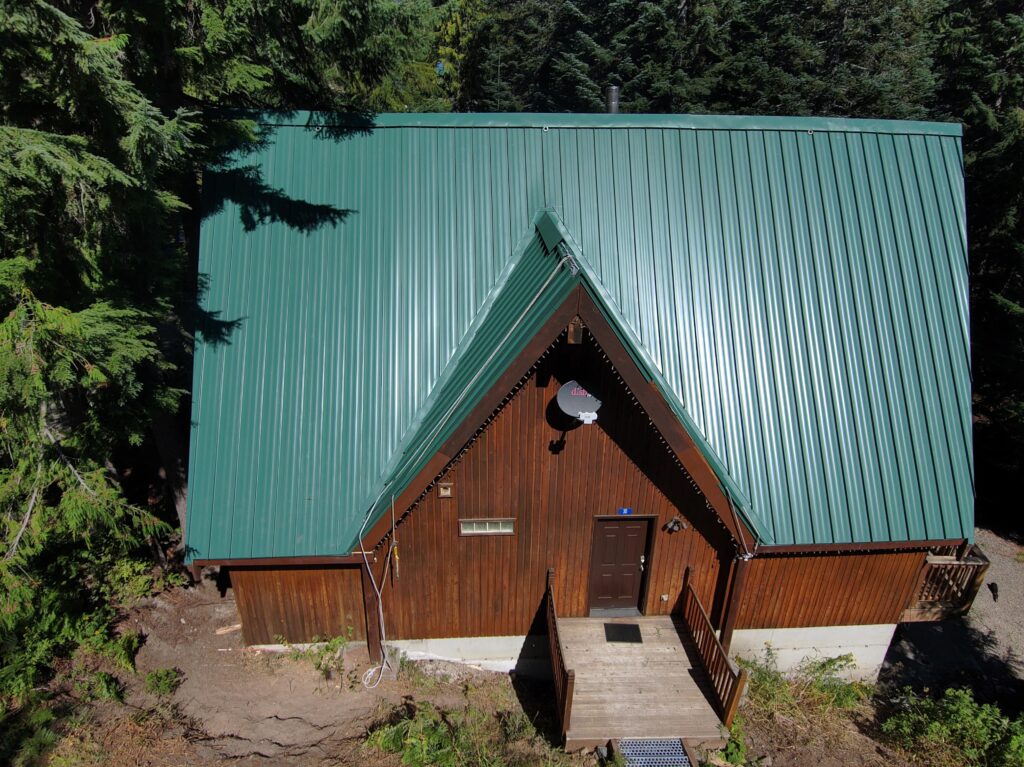Energy-efficient roofing is no longer just a trend—it’s a smart, sustainable investment for your home. But what are energy-efficient roofing materials exactly, and how do you choose the best option for your climate, budget, and long-term savings?
In this guide, we’ll explore the most effective roofing materials that help reduce energy consumption, regulate indoor temperatures, and contribute to a more eco-friendly roofing system.
Whether you’re replacing your roof or building new, understanding energy-efficient roofing materials can save you money and reduce your carbon footprint.
Understanding Energy Efficiency in Roofing
Before diving into material comparisons, it’s important to define what makes roofing energy-efficient.
Reflectivity and Insulation
These roofing materials reflect solar radiation instead of absorbing it. This helps keep your attic and living spaces cooler in the summer. Materials with high insulating properties can also reduce heat loss during the winter.
Climate Suitability
Not every material works equally well in every environment. Choosing the right energy-efficient roofing for your region plays a major role in long-term performance. If you’re unsure, start with this comprehensive guide to identifying the right roof type.
Best Energy-Efficient Roofing Materials
If you’re wondering what are energy-efficient roofing materials that actually work, here are the top options most commonly recommended by roofing experts:
Metal Roofing
Metal is among the best energy-efficient roofing materials on the market. It reflects sunlight, is often coated with special finishes, and is fully recyclable.
Learn more about metal roofs vs shingles to see if it’s the right choice for your home.
Cool Roof Shingles
These asphalt shingles are treated with reflective granules that improve solar reflectance. They’re a great middle-ground option for homeowners who want better energy-efficient roofing without straying from traditional aesthetics.
Clay and Concrete Tiles
Tiles have natural thermal resistance and airspace under each tile, which contributes to improved insulation. Though heavier and more expensive, they perform well in hot climates.
Green Roofing Systems
Living roofs, while more complex to install, offer insulation, reduce runoff, and provide natural cooling benefits. They’re especially popular in urban settings focused on eco-friendly roofing solutions.
Synthetic and Composite Materials
Some composite shingles are made from recycled plastics and rubber and designed for both longevity and energy savings. Ask your contractor which eco-friendly roofing materials are available in your area.
Want more info on sustainable options? See our article on eco-friendly roofing materials.
Choosing the Right Energy-Efficient Roof for Your Home
Consider Your Budget and ROI
While upfront costs may be higher for some options, energy savings and longevity often make up for it. Metal roofs, for example, can last over 50 years with minimal maintenance.
Evaluate Insulation and Ventilation
Even the most energy-efficient roofing materials need to be paired with proper insulation and attic ventilation to be effective. Ask your contractor how the roofing system will perform as a whole.
Think About the Environment
Many homeowners choose eco-friendly roofing materials not just for savings, but also to reduce their environmental impact. If that’s important to you, prioritize recyclable materials and roofing systems with ENERGY STAR® ratings.
Final Thoughts on Energy-Efficient Roofing
So, what are energy-efficient roofing materials you should consider? Metal, cool shingles, clay tiles, and green roofs all offer excellent options depending on your goals. As roofing technology advances, even traditional materials now have energy-smart versions.
Choosing the right one starts with understanding your climate, evaluating the total roofing system, and working with a contractor who understands both performance and aesthetics.
For additional help comparing options, check out our roof material comparison guide.
Energy-efficient roofing materials are one of the smartest ways to improve comfort and lower utility bills year-round. If you’re planning a replacement or want expert advice, Orca Roofing is here to help you make the right choice—efficiently and sustainably.
Contact us today for a personalized consultation.
Emergency Efficient Roofing FAQs

Which is more energy efficient: metal or shingles roof?
Metal roofs are generally more energy efficient than asphalt shingles. Metal reflects more solar heat, which helps reduce cooling costs during warmer months. Asphalt shingles, by contrast, tend to absorb heat, making your attic warmer and increasing your reliance on air conditioning. If energy efficiency is a top priority, metal is often the better long-term investment.
Are metal roofs energy efficient?
Yes, metal roofs are energy efficient, especially when coated with reflective finishes or ENERGY STAR®-rated coatings. They reflect sunlight instead of absorbing it, helping to maintain cooler indoor temperatures and lower energy bills during summer. Their durability and compatibility with insulation and ventilation upgrades make them a smart choice for eco-conscious homeowners.
Is a new roof considered an energy-efficient improvement?
Installing a new roof can absolutely be considered an energy-efficient home improvement—especially if you upgrade insulation, ventilation, or choose energy-saving materials like metal or reflective shingles. A new roof can help reduce heat transfer, improve attic airflow, and even qualify for local or federal energy-efficiency incentives in some cases.
What color metal roof is more energy efficient?
Lighter colors like white, beige, or light gray are typically the most energy-efficient metal roof colors. These shades reflect more sunlight than darker tones, helping to keep your home cooler. Cool roofing technology, including reflective coatings, can further boost efficiency—regardless of color.


